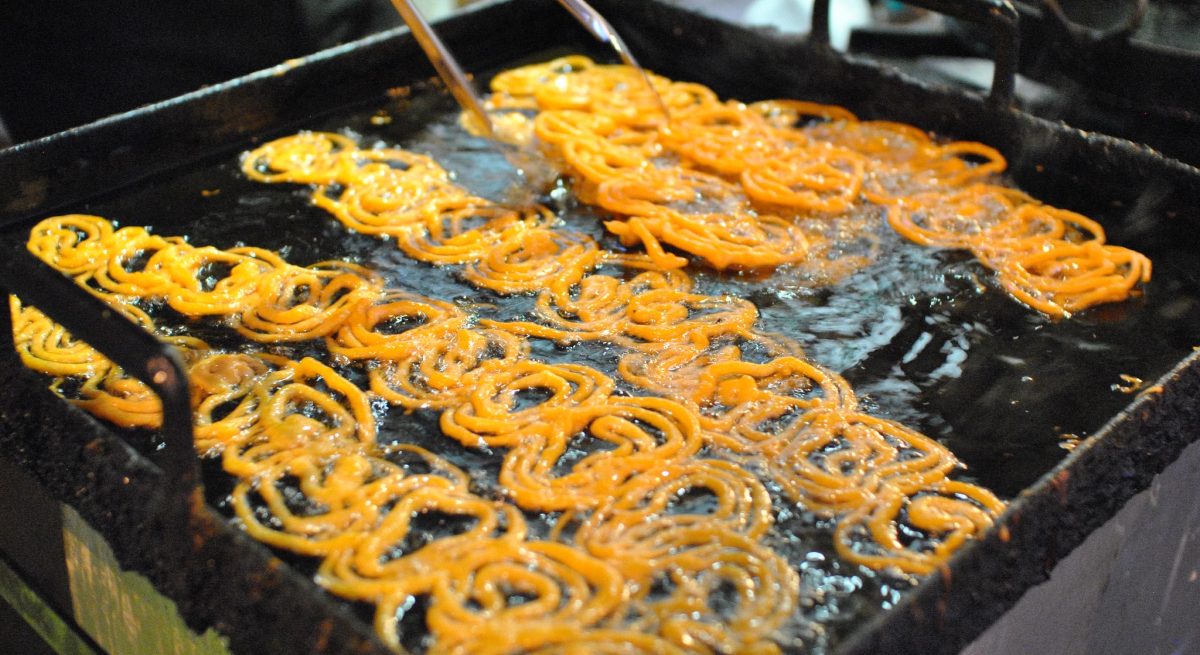Trash or Treasure? Used Cooking Oil’s Golden Allure Isn’t Just About its Color
4 Min Read By Carla Simons
A garage sale’s success depends on the saying, “one person’s trash is another’s treasure.” Who could imagine the same could be said of smelly, dirty, used-up restaurant grease?
Used cooking oil, sometimes referred to as “liquid gold”, turns out to be an extremely valuable resource for both restaurateurs and refineries — and thieves. Each year, grease thieves steal $75 million worth of used cooking oil and kitchen grease from foodservice establishments, estimates the North American Renderers Association (NARA, formerly NRA for National Renderers Association). Larger cities report dozens of thefts each month, with arrests ranging from minimal sentences to imprisonment and hefty fines.
Stealing Grease is a Crime?
In North America, approximately 4.4 billion pounds of used cooking oil is generated annually from restaurants and other foodservice businesses. That’s a lot of waste product coming from a steady diet of fries, chicken tenders and an anything-you-can-imagine-tastes-better-fried culture. If the used cooking oil can’t be repurposed, it winds up in landfills – or down drains! Both are poor solutions. Degrading vegetable oils and animal fats emit odors attracting rodents and vermin and contribute to an environment ripe for pathogens and bacteria to flourish. And clogged drains can result in overflows that could result in heavy fines.
The ease of stealing used cooking oil, combined with a profit opportunity, has created grease bandits from all demographics — small-time thieves, shady competitors and even organized crime gangs.
For well over a century, the rendering industry has collected, cleaned and processed animal fats and used cooking oils, recovering nutrients, oils and fatty acids for use in animal feed or a myriad of household or industrial products such as paints, polishes, cleansers, plastics, creams, tires, lubricants, and more. In the 1990’s, key players in the rendering industry began producing biofuel from recycled animal fats and cooking oils on a commercial scale. And in 2015, North America’s largest renewable diesel facility went live, producing a low carbon biofuel with properties identical to petroleum-based diesel, but releasing up to 85 percent less carbon emissions. These developments were welcomed for their contributions to creating a more sustainable world… and it raised the value of used cooking oil, enabling many restauranteurs to get some money back for their oil rather than pay a service to have it collected. But there’s always a downside.
The Thieves of the World Took Notice
It didn’t take long for those of lesser character to recognize the stinky grease sitting in a container behind their neighborhood restaurant was worth some money. While its value changes with a changing commodities market, UCO’s growing use to produce biofuel has helped keep the price elevated. Government regulations have also elevated its value, setting mandates on how much biofuel must be mixed into petroleum diesel fuel to bring about a specified reduction in transportation emissions. Currently, the EPA requires refiners to blend 20 billion gallons of biofuels (which includes biodiesel and renewable diesel) into their fuel.
Stolen UCO only works if there’s a “don’t ask, don’t tell” chain. When thieves steal this used oil, they are stealing from both the restaurant and the restaurant’s contracted grease service provider, selling it to unscrupulous buyers for pure profit. Reputable biofuel companies will only buy used cooking oil from approved vendors with a trackable chain of custody (particularly for oil that is being used in feed or technical applications), but indiscriminate biofuel producers will buy any UCO to make biofuel they can then sell to oil companies – who must purchase it to meet government fuel mandates. While these mandates help the environment and put safer fuel on our roads, it also can unintentionally promote bad practices if the buyer doesn’t track the material back to its source.
The ease of stealing used cooking oil, combined with a profit opportunity, has created grease bandits from all demographics — small-time thieves, shady competitors and even organized crime gangs. “The thieves are difficult to deter,” says Frank Scoggins, security manager for a leading UCO recycling company. Scoggins says his security team frequently encounters repeat offenders who refuse to leave the trade. The team also cooperated with Homeland Security in a 2019 arrest of 21 individuals linked to a crime ring on the East Coast that was responsible for the theft of approximately $3.4 million worth of used cooking oil.
Persistence and working closely with restaurant staff and law enforcement to prosecute such criminal activity have proven to be the key to making inroads against grease theft.
How to Prevent Kitchen Grease Theft
The best deterrent for grease theft is to move the storage to indoor systems, as offered by numerous grease recycling companies and renderers. Many of these systems are automated and secured by proprietary fittings on the outside wall that only contracted service vehicles can access, ensuring there is no way for thieves to siphon any used cooking oil – other than conning their way inside the kitchen to manually pump it.
If an indoor tank isn’t feasible, the following methods can help prevent used cooking oil theft:
- Monitor grease levels in your tank; is it fluctuating between service visits?
- Make sure your corral area is well lit throughout the night
- Install a security camera that monitors your corral
- Install fencing with a lockable gate to hide tanks from view
- Install an alarm that sends mobile alerts if the oil level drops unexpectedly
- Know the official uniform and vehicles for your service provider – if you don’t recognize the truck or uniforms of the crew pumping the grease from your tank, assume they are thieves and call the police
Educating customers, the public and local law enforcement that grease theft truly is a crime is a key deterrent to curtailing it.

